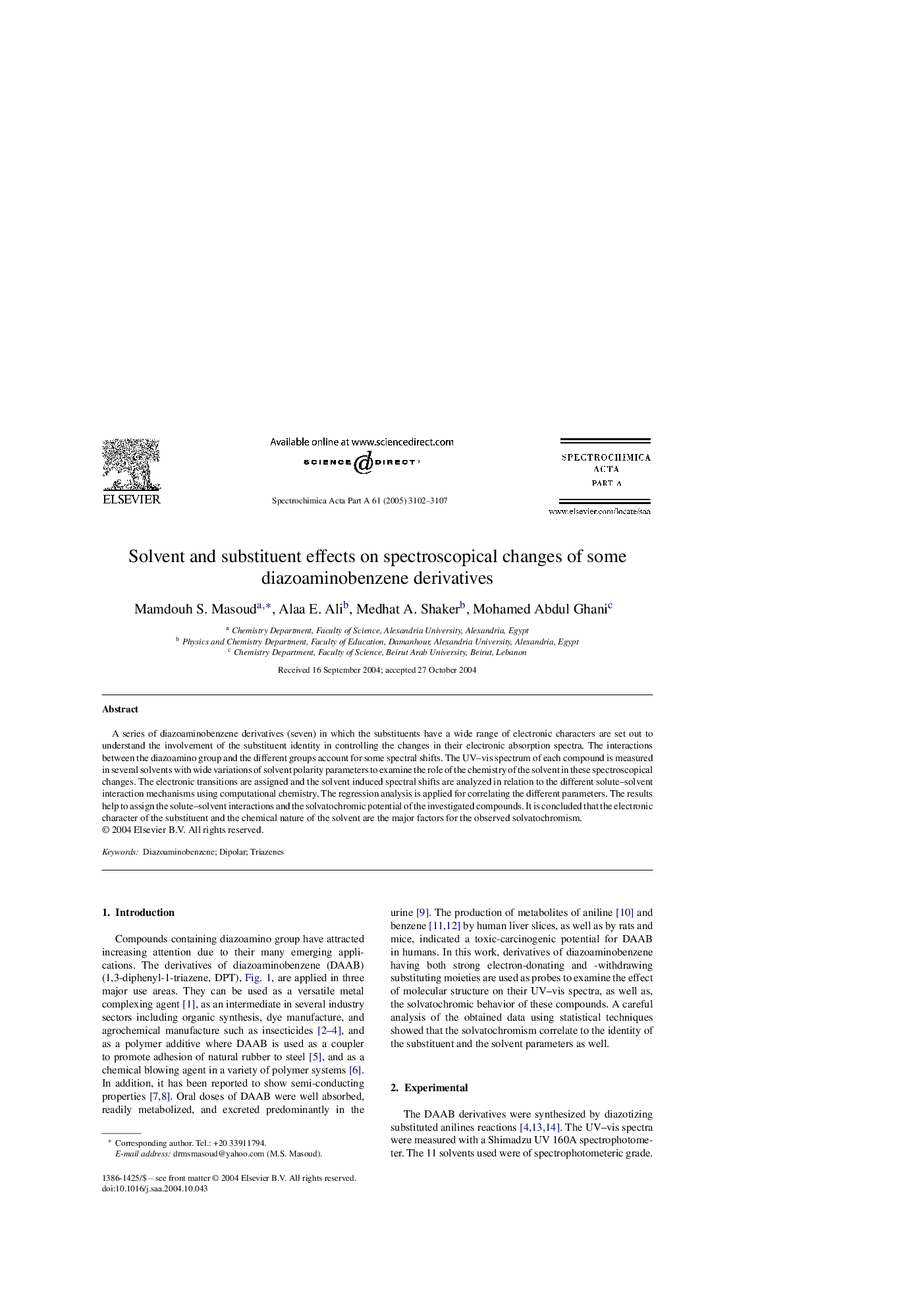| کد مقاله | کد نشریه | سال انتشار | مقاله انگلیسی | نسخه تمام متن |
|---|---|---|---|---|
| 1237015 | 1495291 | 2005 | 6 صفحه PDF | دانلود رایگان |

A series of diazoaminobenzene derivatives (seven) in which the substituents have a wide range of electronic characters are set out to understand the involvement of the substituent identity in controlling the changes in their electronic absorption spectra. The interactions between the diazoamino group and the different groups account for some spectral shifts. The UV–vis spectrum of each compound is measured in several solvents with wide variations of solvent polarity parameters to examine the role of the chemistry of the solvent in these spectroscopical changes. The electronic transitions are assigned and the solvent induced spectral shifts are analyzed in relation to the different solute–solvent interaction mechanisms using computational chemistry. The regression analysis is applied for correlating the different parameters. The results help to assign the solute–solvent interactions and the solvatochromic potential of the investigated compounds. It is concluded that the electronic character of the substituent and the chemical nature of the solvent are the major factors for the observed solvatochromism.
Journal: Spectrochimica Acta Part A: Molecular and Biomolecular Spectroscopy - Volume 61, Issues 13–14, October 2005, Pages 3102–3107